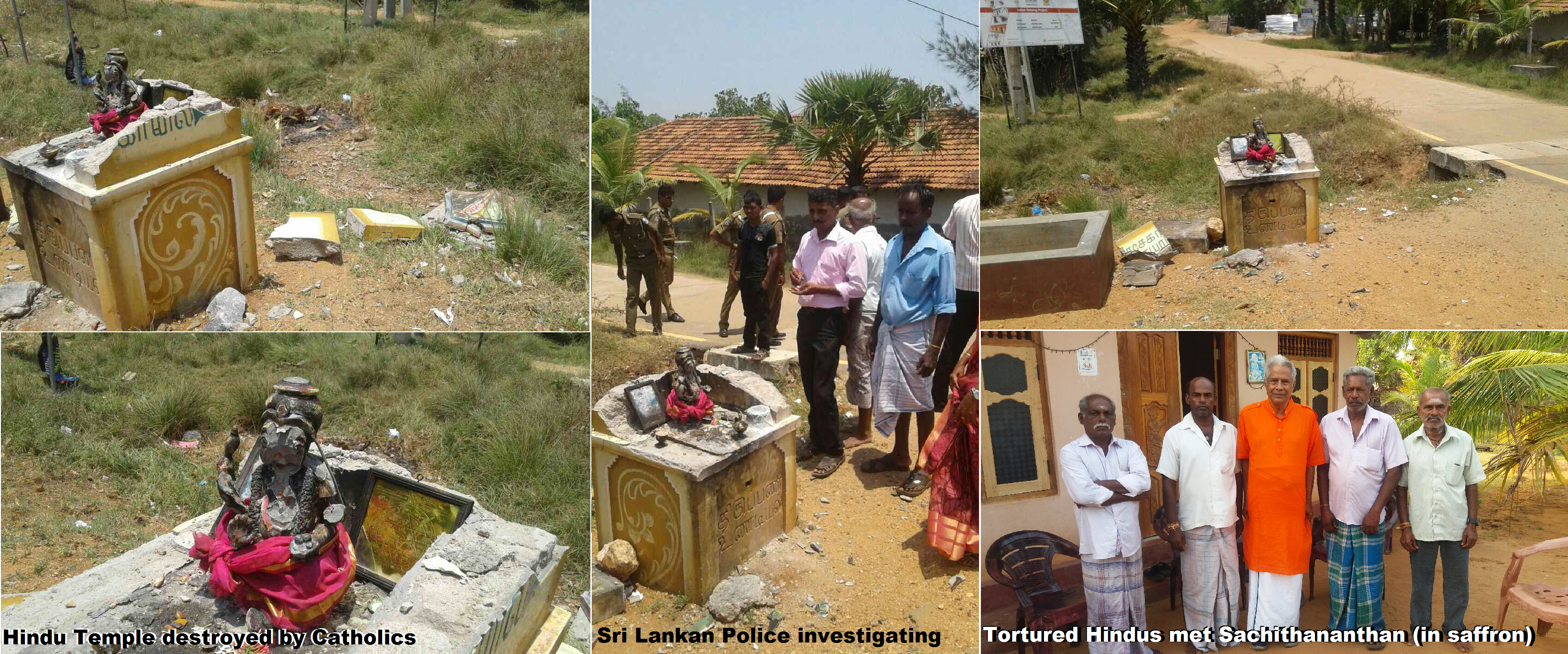Struggle for Hindu Existence
Recently a temple in Sri Lanka was vandalized by, apparently, Christians. In this article, the attack is laid out: "Catholic priest in charge of the parish Devanpiddy, a village to the west of Vellankulam towards the coastline, led the vandals at midnight on 23rd/ 24th April to destroy the Pillayar temple and attack the Hindu residents causing extensive damage to Hindus and their properties." Things between the two religious groups have been escalating for a while now, starting in 2007 when the priest planted a tall cross in the village without permission. The Hundu's removed it, then the attacks started.
Struggle for Hindu Existence accepts donations to strengthen their fight for marginal Hindus in India, specially in South Bengal. We have been assured by the cause that our donation would be used exactly and only for rebuilding the temple.
Mission Blue
The earth's oceans are the largest ecosystems on Earth, they are the Earth’s largest life support systems. Oceans generate half of the oxygen people breathe. At any given moment, more than 97% of the world’s water resides in oceans. Oceans provide a sixth of the animal protein people eat. They’re the most promising source of new medicines to combat cancer, pain and bacterial diseases. Living oceans absorb carbon dioxide from the atmosphere and reduce the impact of climate change. The diversity and productivity of the world’s oceans is a vital interest for humankind. Our security, our economy, our very survival all require healthy oceans. Yet, we're systematically destroying them. Pollution, logging, dredging, draining of wetlands, and coastal development are all factors that lead to marine habitat destruction and the death of entire species of marine life. We're reaching a tipping point. Before long, the oceans won't be able to sustain our way of life anymore. Once this happens, the earth's atmosphere will become incapable of sustaining us, and we will all die. This says nothing about the billions of animals dying a year, the tons of junk we drop in the oceans, leading to dead zones where nothing can grow, and on, and on, and on.
Mission Blue hopes to preserve the healthy ocean we have left, and restore dead zones by creating Hope Spots. Hope Spots are special places that are critical to the health of the ocean — Earth’s blue heart. Hope Spots are about recognizing, empowering and supporting individuals and communities around the world in their efforts to protect the ocean. World renowned marine biologist Sylvia Earle introduced the concept in her 2009 TED talk and since then the idea has inspired millions across the planet. While about 12 percent of the land around the world is now under some form of protection (as national parks etc.), less than four percent of the ocean is protected in any way. Hope Spots allow us to plan for the future and look beyond current marine protected areas (MPAs), which are like national parks on land where exploitative uses like fishing and deep sea mining are restricted. Hope Spots are often areas that need new protection, but they can also be existing MPAs where more action is needed. They can be large, they can be small, but they all provide hope.
Do you have a favorite out of these two? Vote for it in our poll until June 15th. We will announce this month's winner on June 16th, 2017.

No comments:
Post a Comment